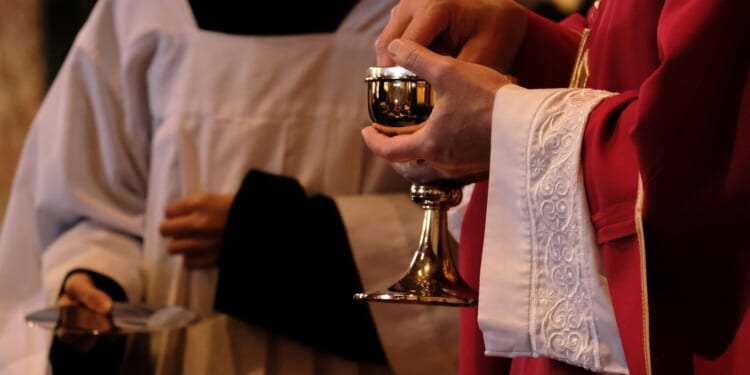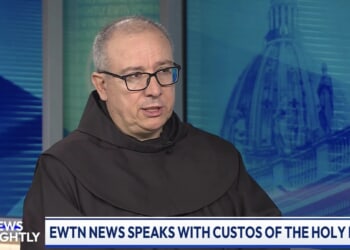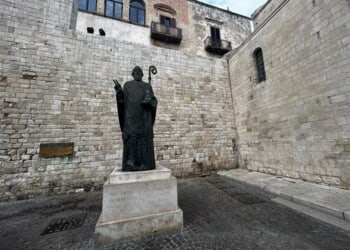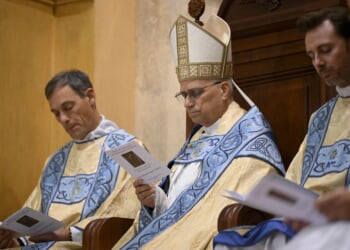“Flourishing” priests, they tell us — scoring an 8.2 on the Harvard Flourishing Scale, no less. It sounds like something dreamt up in a boardroom rather than a confessional. One wonders who exactly is thriving here: the priests or the statisticians.
According to the Catholic University study, over 80 percent of U.S. priests report being “well.” But in an age when parishes are closing, vocations are vanishing, and many pews are empty, such cheer feels suspiciously upbeat. A priest can score highly on “well-being” while presiding over a dying parish. Because the metric measures mood, not mission. Holiness doesn’t translate well to data sets.
The Church, we are told, is resilient. And perhaps it is — on paper. But “resilience” has become the polite euphemism for stagnation. Many parishes survive, but few truly thrive. You can keep the lights on without ever rekindling the fire. There’s a difference between being alive and being aflame. The survey’s language of “flourishing” sounds like a corporate wellness seminar for men who once vowed to live and die for souls.
It’s not that priests aren’t faithful. Many are heroic, humble, and quietly burning themselves out in spiritual triage — rescuing fractured families, isolated parishioners, and a generation more fluent in notifications than in novenas. But the system surrounding them seems content with applause over awakening. The “National Study of Catholic Priests” reads like a victory lap for managerial optimism: high satisfaction, moderate burnout, steady trust in bishops. Box ticked. Mission accomplished.
Except it isn’t. Because behind the metrics lies a deeper malaise — a priesthood more measured than mystic, more scheduled than spiritual. The modern Church increasingly treats its priests like professionals, not prophets. We hand them surveys instead of sermons, conferences instead of contemplation, toolkits instead of transcendence. It’s a strange paradox: the more we quantify their happiness, the less sanctity seems to matter.
And what of these “generational divides”? The study politely notes that younger priests are more conservative — more Eucharist than encounter, more cassock than casual Friday. In truth, they’re not reactionaries but romantics, reaching backward to touch something eternal. They see the Church’s future not in corporate catechisms about inclusion, but in incense, sacrifice, and silence. Their older counterparts, meanwhile, lean liberal, still convinced that relevance will bring the masses back. It hasn’t.
This is more than a clash of ideologies — it’s a clash of imaginations. The older generation imagines a Church blending in; the younger imagines one standing apart. And somewhere between the two, the faithful are left to wonder what, exactly, the Church still wants to be: a lighthouse or a coffeehouse.
The study praises priests who court the culture instead of confronting it. It’s a dangerous trade. Engagement without transcendence is activism in a collar. Christ didn’t tell Peter to host listening sessions; He told him to feed His sheep. When every spiritual duty becomes a public consultation, the sacred slips quietly into the sociological.
The report also highlights “confidence in bishops” ticking slightly upward. That may comfort the bureaucrats, but for most priests, confidence is not the point — conviction is. The Church’s health can’t be measured by morale reports or managerial satisfaction. It must be measured by conversion — of hearts, not data.
So are priests truly thriving — or simply adjusting to lowered expectations? The modern Church often mistakes comfort for calling, and “well-being” for holiness. The first keeps you content; the second keeps you crucified. There’s a reason the saints never scored high on wellness scales.
Saint John Vianney slept three hours a night and battled the devil in his rectory. Padre Pio bled daily for half a century. Mother Teresa endured decades of spiritual desolation yet kept feeding the poor. None of them would have been described as “flourishing.” They were spent, blistered, burdened — and sanctified. Holiness isn’t about feeling good; it’s about doing good when you don’t. Yet today’s Church seems desperate to reassure itself that its shepherds are “coping well,” as if coping were the same as consecration.
If the study is right and our clergy are indeed flourishing, then perhaps it’s time to ask: flourishing toward what? Because flourishing without fruit is just foliage. A thriving garden still needs pruning; comfort can smother conviction. The priesthood wasn’t meant to be happy — it was meant to be holy. And holiness, as every decent Catholic knows, doesn’t always feel good.
The great lesson of faith is that the cross builds what comfort breaks. A priest too comfortable in his vocation risks becoming a manager of souls rather than a mender of them. True joy — the kind that outlasts data points — comes from sacrifice, not satisfaction. The Church was not built by cheerful professionals but by men who prayed through pain, fasted through famine, and loved through loss. If our era’s priests feel only “flourishing,” then perhaps the Cross has grown too light.
Thriving priests are not the ones who shine in surveys. They’re the ones who stumble out of confessionals exhausted but radiant, who walk back to empty rectories praying for one more soul, one more spark, one more reason to stay. Those priests don’t need more data — they need more disciples. And a Church that measures its joy by Harvard metrics might need confession more than it realizes.
READ MORE by John Mac Ghlionn:
How the Irish Became America’s Favorite Fantasy


![Scott Bessent Explains The Big Picture Everyone is Missing During the Shutdown [WATCH]](https://www.right2024.com/wp-content/uploads/2025/11/Scott-Bessent-Explains-The-Big-Picture-Everyone-is-Missing-During-350x250.jpg)














